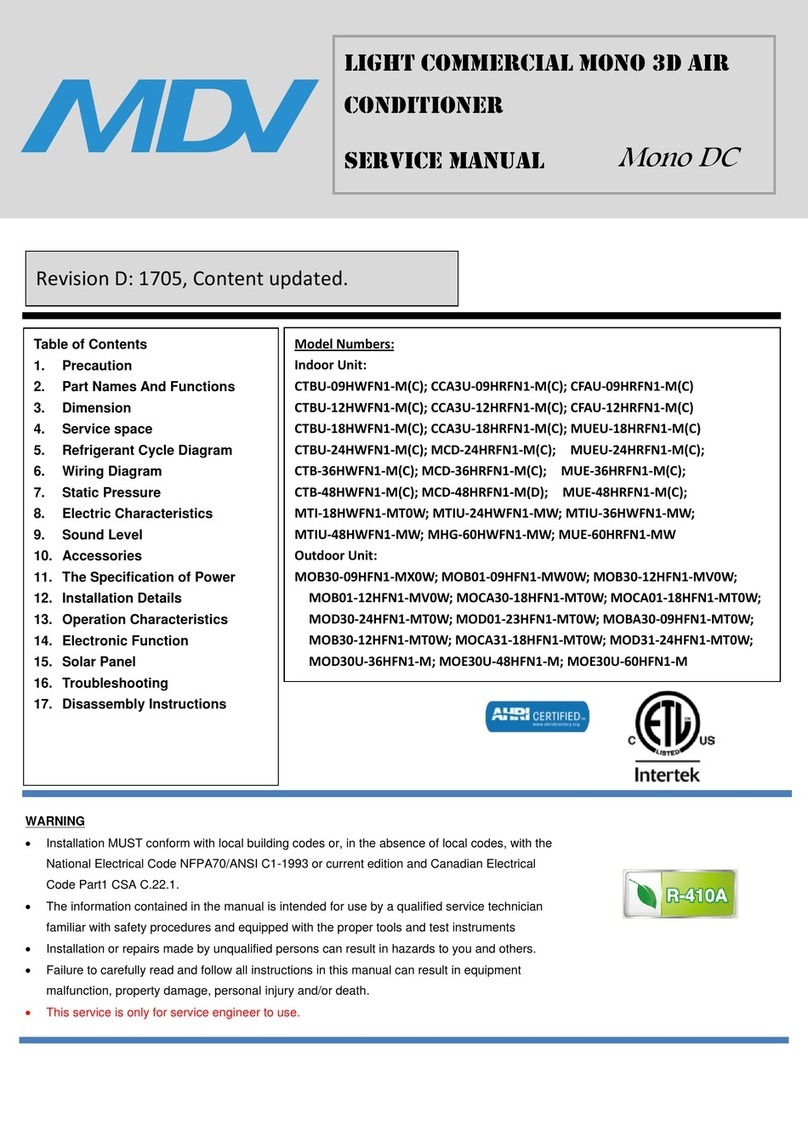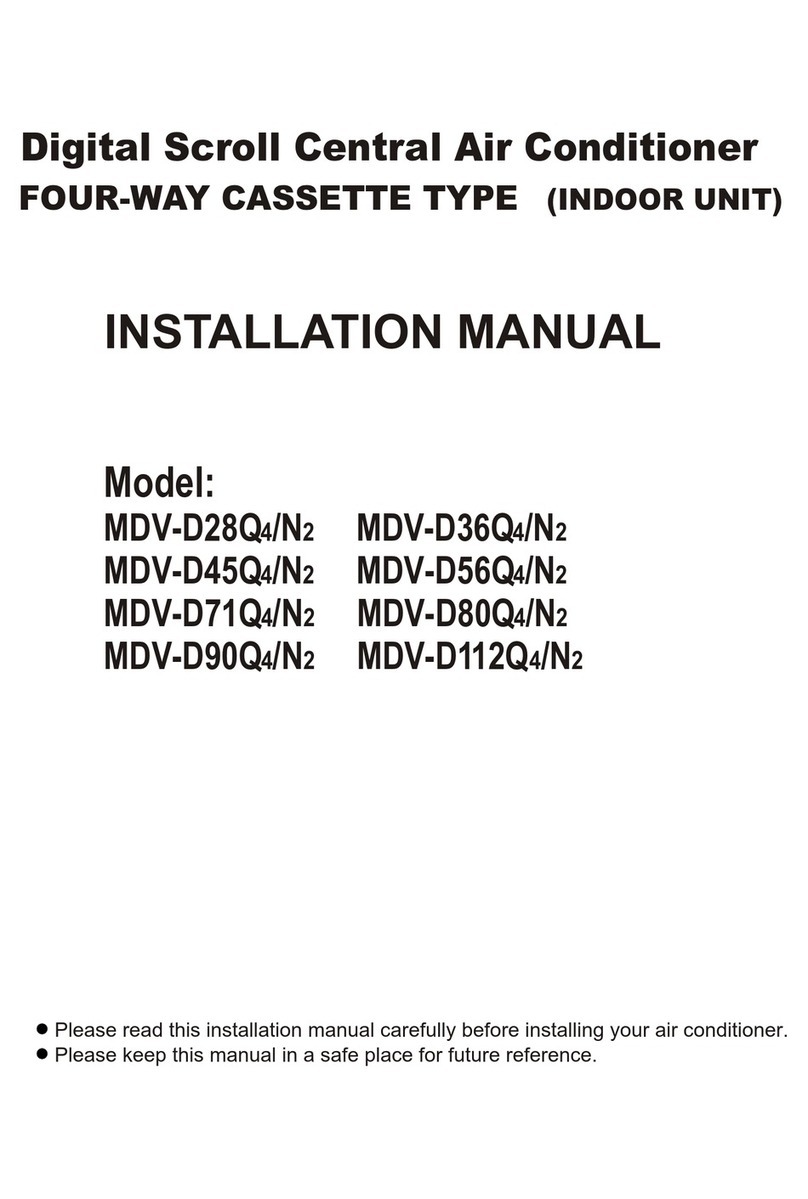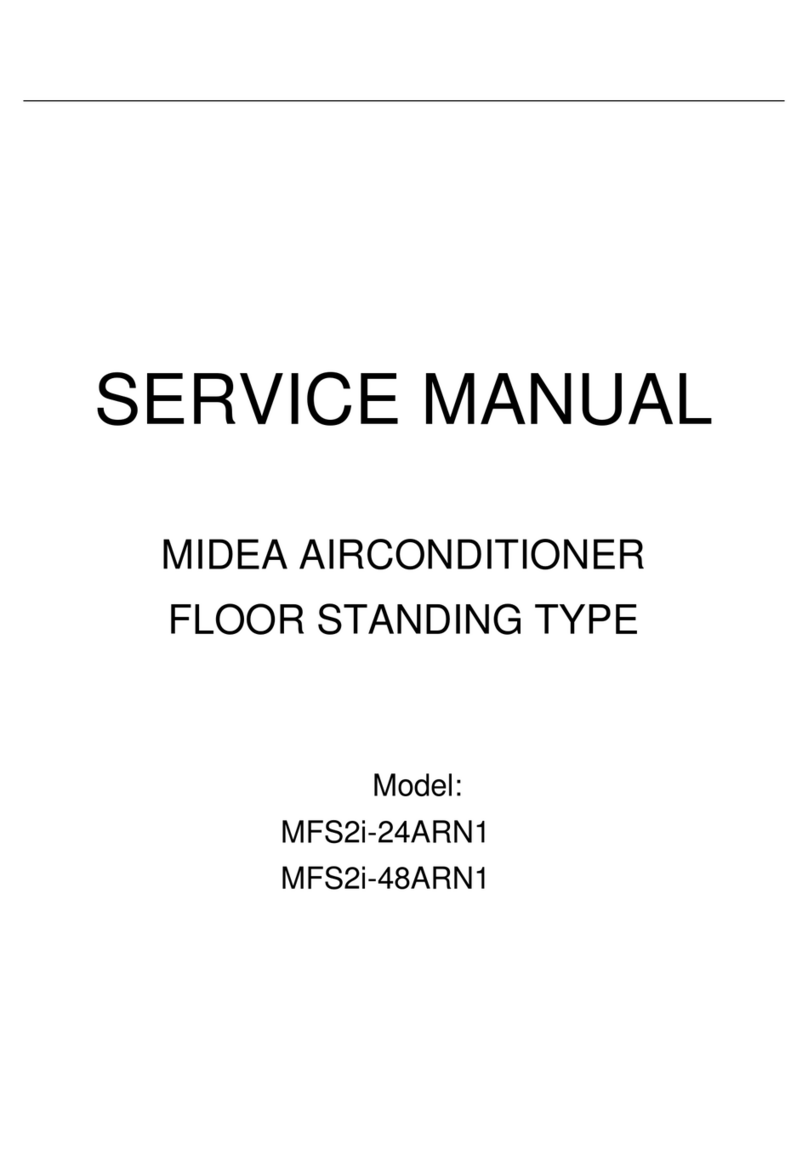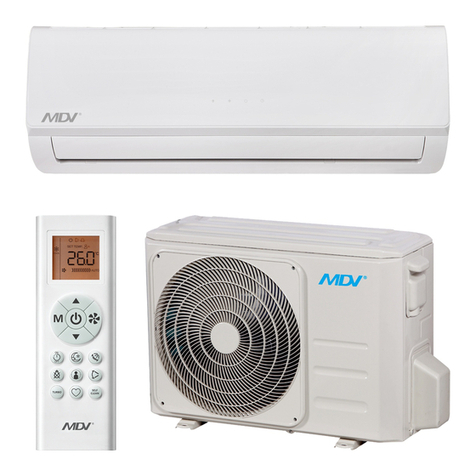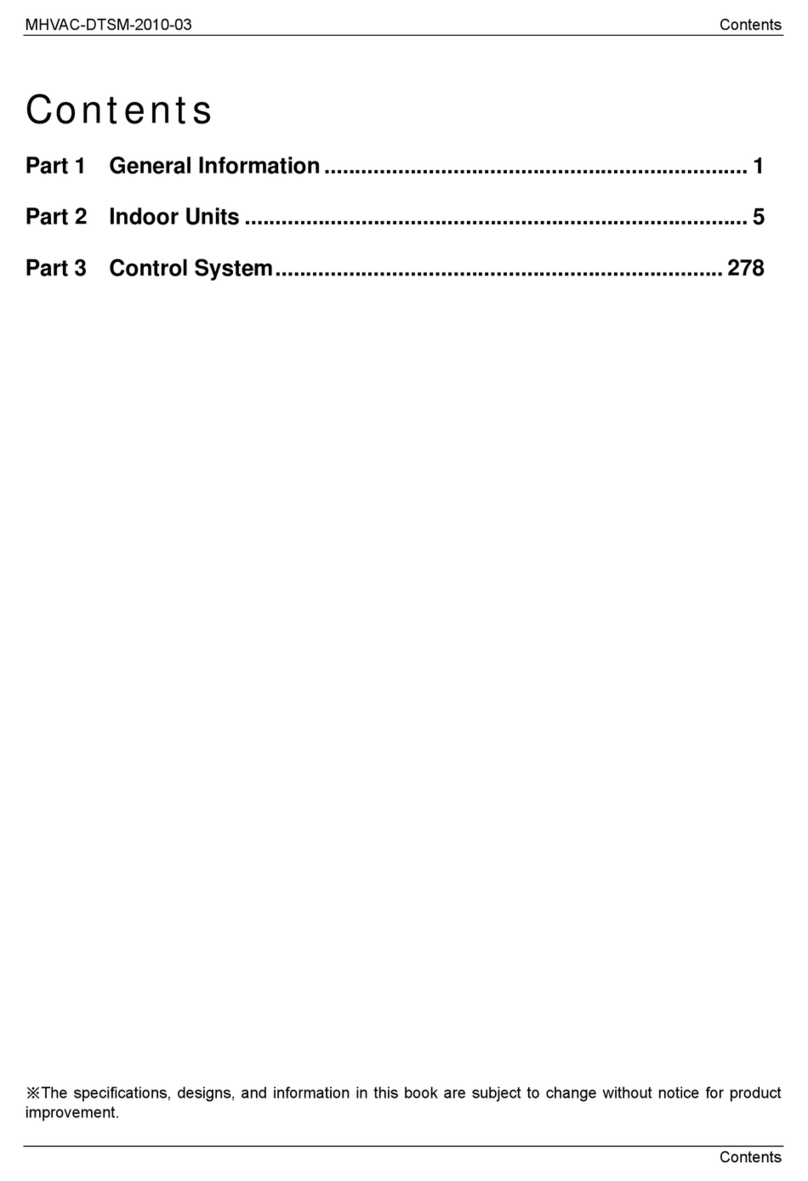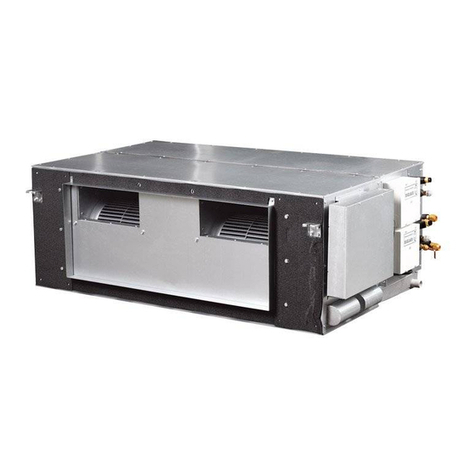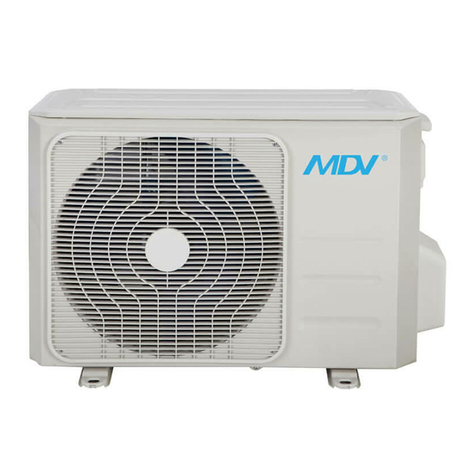CONTENTS
1. Precaution .................................................................................................................................................... 1
1.1 Safety Precaution.......................................................................................................................... 1
1.2 Warning......................................................................................................................................... 1
2. Function........................................................................................................................................................ 6
3. Dimension .................................................................................................................................................... 9
3.1 Indoor Unit..................................................................................................................................... 9
3.2 Outdoor Unit................................................................................................................................ 10
4. Refrigerant Cycle Diagram ........................................................................................................................11
5. Wiring Diagram .......................................................................................................................................... 12
5.1 Indoor Unit................................................................................................................................... 12
5.2 Outdoor Unit................................................................................................................................ 14
6. Installation details...................................................................................................................................... 17
6.1 Wrench torque sheet for installation........................................................................................... 17
6.2 Connecting the cables ................................................................................................................ 17
6.3 Pipe length and the elevation ..................................................................................................... 18
6.4 Air purging with vacuum pump.................................................................................................... 20
6.5 Pumping down (Re-installation).................................................................................................. 21
6.6 Re-air purging (Re-installation)................................................................................................... 22
6.7 Balance refrigerant of the 2-way, 3-way valves.......................................................................... 23
6.8 Evacuation .................................................................................................................................. 24
6.9 Gas charging............................................................................................................................... 25
7. Operation characteristics ......................................................................................................................... 26
8. Electronic function.................................................................................................................................... 27
8.1 Abbreviation ................................................................................................................................ 27
8.2 Display function........................................................................................................................... 27
8.3 Main Protection........................................................................................................................... 28
8.4 Operation Modes and Functions................................................................................................. 29
9. Troubleshooting......................................................................................................................................... 40
9.1 Indoor Unit Error Display............................................................................................................. 40
9.2 Diagnosis and Solution............................................................................................................... 41












